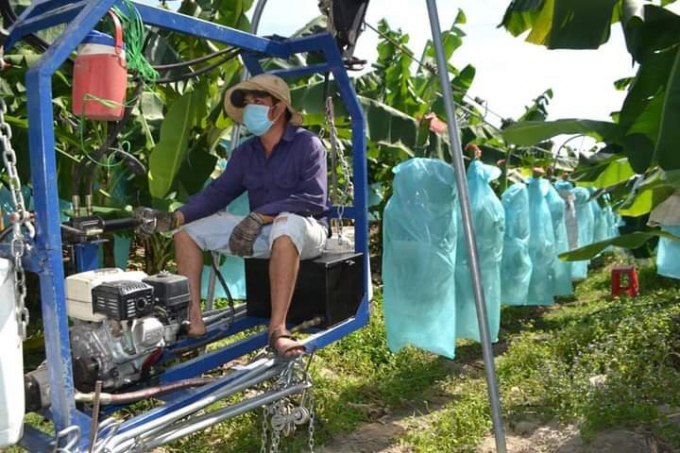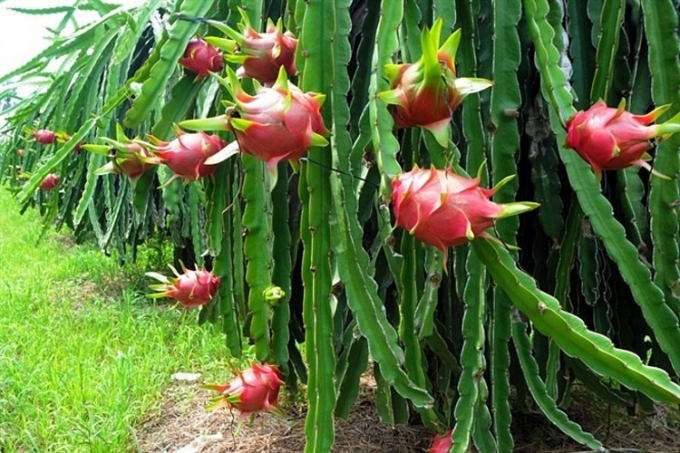December 17, 2025 | 08:38 GMT +7
December 17, 2025 | 08:38 GMT +7
Hotline: 0913.378.918
December 17, 2025 | 08:38 GMT +7
Hotline: 0913.378.918

Harvest bananas for export in Long An province, Vietnam.
According to China Customs agency, in the first 7 months of 2021, imports of 8 fruits (including mango, dragon fruit, banana, longan, litchi, watermelon, rambutan, and mangosteen) into the country reached 2 million tons, with the value was US$ 1.86 billion.
Vietnam has 9 kinds of fresh fruits officially exported to China, including mango, dragon fruit, banana, logan, litchi, watermelon, rambutan, jackfruit and mangosteen. However, in the statistics of Chinese Customs, jackfruit fruit does not have its own HS code classification, so only the remaining 8 kinds of fruit can be synthesized that China has officially imported from Vietnam.
In the first 7 months of 2021, imports of 8 types of fruits (mango, dragon fruit, banana, logan, litchi, watermelon, rambutan and mangosteen) from Vietnam to China reached 747.6 thousand tons, with the value was US$ 491.2 million. With this import value, Vietnam accounts for the highest proportion in the markets supplying the above eight fruits to China.
Among the 8 kinds of fruits (mango, dragon fruit, banana, logan, litchi, watermelon, rambutan and mangosteen) imported from Vietnam, China imported the most dragon fruit, reaching 368.9 thousand tons, with the value was US$ 491.2 million. Dragon fruit accounted for 49.3% of the total import volume of 8 fruits from Vietnam to China. Fresh and dried bananas followed, accounted for 39.2%; watermelon accounted for 7.2%; logan and longan (dried logan pulp) accounted for 3.8%; mango accounted for 0.3%...
Trailed behind Vietnam in term of export market's size to China of these 8 kinds of fruits (mango, dragon fruit, banana, logan, litchi, watermelon, rambutan and mangosteen) is the Philippines, reaching 473.8 thousand tons, with the value was US$ 271 million. Banana was China's main fruit imported from the Philippines in the first 7 months of 2021. Bananas accounted for 99.99% of total fruit imports from the Philippines into China, the remaining 0.01% is mango.
Thailand ranks 3rd in exporting 8 kinds of fruits (mango, dragon fruit, banana, logan, litchi, watermelon, rambutan, and mangosteen) to China. China's imports from Thailand reached 386.2 thousand tons, with the value was 824.3 million USD. In which, the import volume of logan and longan accounted for 97.3% of the total import volume of 8 kinds of fruits from Thailand.
Of the eight fruits (mango, dragon fruit, banana, logan, litchi, watermelon, rambutan and mangosteen) that China imported in the first 7 months this year, fresh and dried bananas accounted for the largest proportion, reached 1.16 million tons, with the value was 642.6 million USD, up 6.2% in volume and 8.4% in value over the same period in 2020.
China imported fresh and dried bananas mainly from the Philippines market, import volume from this market accounted for 40.9%; followed by Vietnam accounting for 25.3%; Cambodia accounted for 19.5%; Ecuador accounted for 10.8%.

Vietnamese dragon fruit accounts for nearly 100% of dragon fruit imported into China.
Dragon fruit ranked second, reached 368.9 thousand tons, with the value was 336.3 million USD, down 12.7% in volume and 11.5% in value over the same period in 2020. China imported dragon fruit mainly from Vietnam, accounted for 99.99% of total dragon fruit imports, the remaining 0.01% was imported from Taiwan market.
Logan and longan ranked third with 242.86 thousand tons, with the value was 369.7 million USD, up 29.1% in volume and 46.7% in value over the same period in 2020. In the first 7 months of 2021, China imported logan and longan mainly from Thailand market, with the volume accounted for 99.65% of the total amount imported.
Translated by Khanh Linh

(VAN) The seafood industry is aiming for an export goal of USD 10.7 billion in 2025. However, resolving bottlenecks regarding data and green finance is an urgent requirement.

(VAN) Exports of ornamental fish generate nearly USD 15 million annually for Ho Chi Minh City, affirming the sector's position as a distinctive economic component of the city's modern urban agriculture structure.

(VAN) Lang Son agricultural products are upgrading planting-area standards, increasing deep processing, and expanding linkages to move toward sustainable exports.

(VAN) Despite numerous challenges, Vietnam's key seafood products are maintaining strong momentum, setting the stage for full-year exports to potentially reach USD 11 billion.

(VAN) The signing of a protocol between Viet Nam and China on the export of fresh jackfruit represents a significant milestone in agricultural trade cooperation between the two countries.

(VAN) On November 27, the Ninh Binh Department of Agriculture and Environment and the Institute for Green Growth Research organized a training course on greenhouse gas inventory for businesses.

(VAN) China’s cooking oil is suddenly flooding into India. It all comes down to a soybean surplus that Beijing doesn’t quite know what to do with.